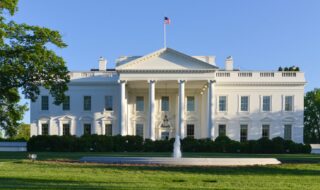February 28, 2023 Last Edit: June 5, 2025
Albany Push for Onerous Minimum Wage Hikes Would Cost Main Street Jobs and Income, According to NFIB Study
Legislative proposals in Albany to drastically hike the minimum wage could lead to significant job losses, income reductions, and closures for small businesses across New York, according to a newly released economic study commissioned by the National Federation of Independent Business (NFIB), the state and nation’s leading small business advocacy association. The economic impact study specifically examines S.3062-D and A.7503-C from the 2021-22 legislative session; both bills were reintroduced in 2023 as S.1978-A and A 2204-A, respectively.
The study, which NFIB announced on February 28, finds that if the legislation in question becomes law, over the next ten years approximately 128,000 jobs would be lost, representing more than 1% of the state’s employment base. Almost 83,000, or 65%, of job losses would be suffered by small businesses with nearly 30% coming at the expense of firms with less than 20 employees.
The cumulative real economic output loss, as a result of such minimum wage hikes, by 2033 would exceed $19 billion. Nearly $12 billion, or 60%, of that lost economic output would have been produced by small businesses.
“As always, the negative impact of these one-size-fits-all, extreme wage hike bills would fall disproportionately on small employers, who are less likely to have the cash reserves or profit margins to plan for and absorb the aggressive increase in labor costs than larger corporate employers,” said NFIB State Director Ashley Ranslow. “New York’s small businesses are dealing with a crisis of financial hardships, all after a pandemic and state-mandated restrictions and lockdowns. Inflation, labor shortages, supply chain disruptions, high fuel prices, spiking utility rates, and crushing UI tax rates imposed by state government are dragging down Main Streets across the New York. Small business owners simply cannot afford Albany politicians saddling them with such drastic labor cost increases.”
Many small businesses will not be able to afford these higher wages and the payroll taxes that accompany them, and there will also be immense pressure on labor costs up the pay scale. NFIB argues that New York State should be providing financial relief to small, independent businesses, and not continuing to saddle Main Street with higher costs and mandates.
On March 1, State Director Ranslow delivered testimony about this pressing issue and the study’s findings to a New York State Joint Legislative Budget Hearing on Labor and Workforce. Her testimony can be found HERE.
>>> Albany needs to hear from NFIB members about this policy threat to your businesses. Please take action to make your voices heard today: https://www.votervoice.net/NFIB/32/Campaigns/101766/Respond <<<
NFIB commissioned this study (“Economic Impacts of a Proposed Minimum Wage Increase in New York State,” Feb. 2023) by Regional Economic Models, Inc. (REMI), after the November elections and indications that the incoming legislature planned to advance some of the most aggressive increases to any state’s minimum wage in the country: $21.25 per hour in New York City, Long Island, and Westchester County and $20 per hour in the remainder of the state by January 1, 2026. Following the prescribed scheduled increases, the legislation in question directs the NYS Commissioner of Labor to determine annual increases in New York’s wage rate based on national price inflation and productivity growth metrics.
###
For 80 years, NFIB has been advocating on behalf of America’s small and independent business owners, both in Washington, D.C., and in all 50 state capitals. NFIB is nonprofit, nonpartisan, and member-driven. Since our founding in 1943, NFIB has been exclusively dedicated to small and independent businesses, and remains so today. For more information, please visit nfib.com.
REMI BSIM (Business Size Impact Module) is a structural economic and demographic forecasting and policy analysis model that allows inputs and provides results by business size. The model integrates input-output, computable general equilibrium, econometric and economic geography methodologies. The model is dynamic, with forecasts and simulations generated on an annual basis and behavioral responses to compensation, price, and other economic factors.
A broader methodology is included in the analysis document.
NFIB is a member-driven organization advocating on behalf of small and independent businesses nationwide.
Related Articles














